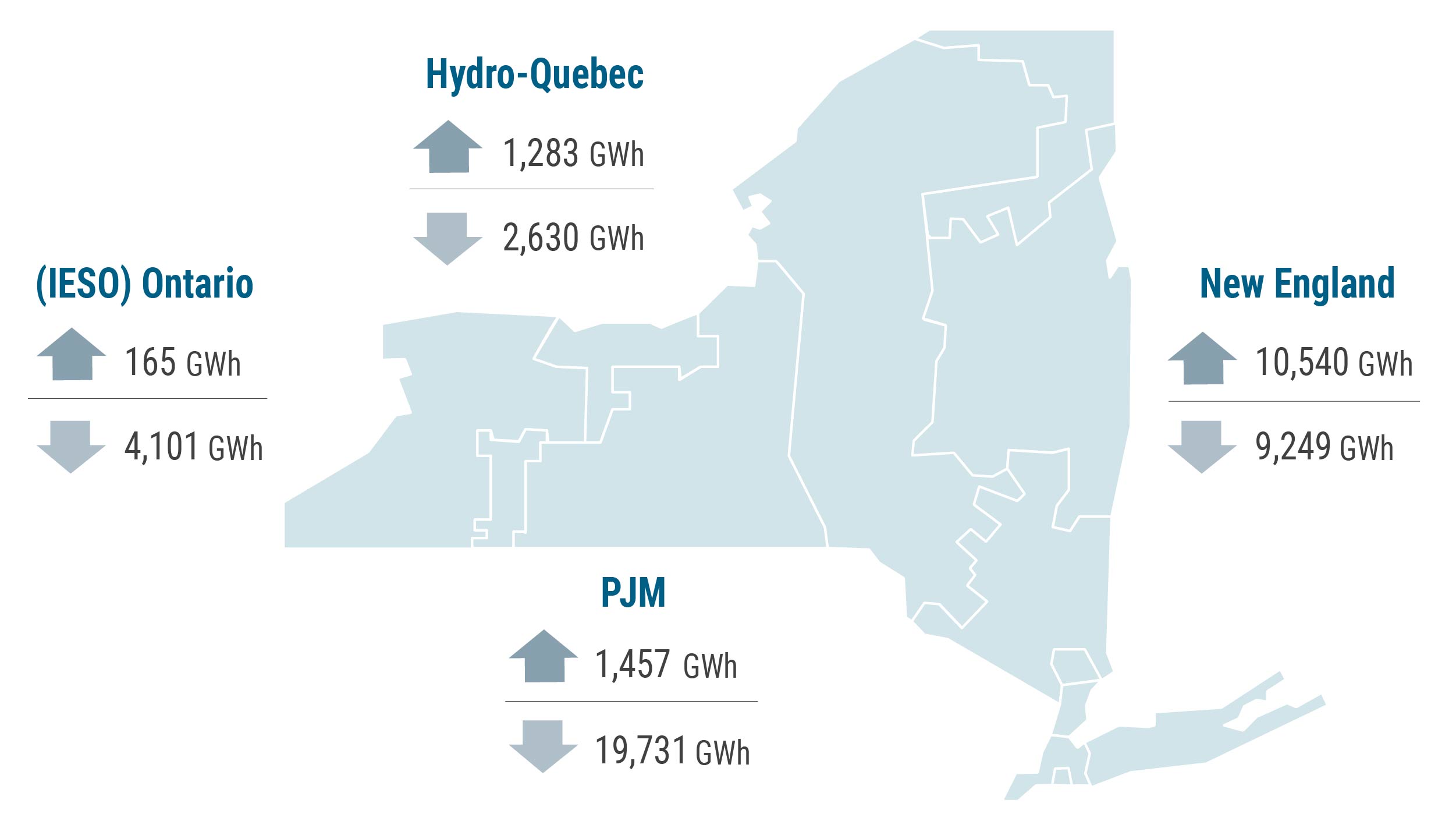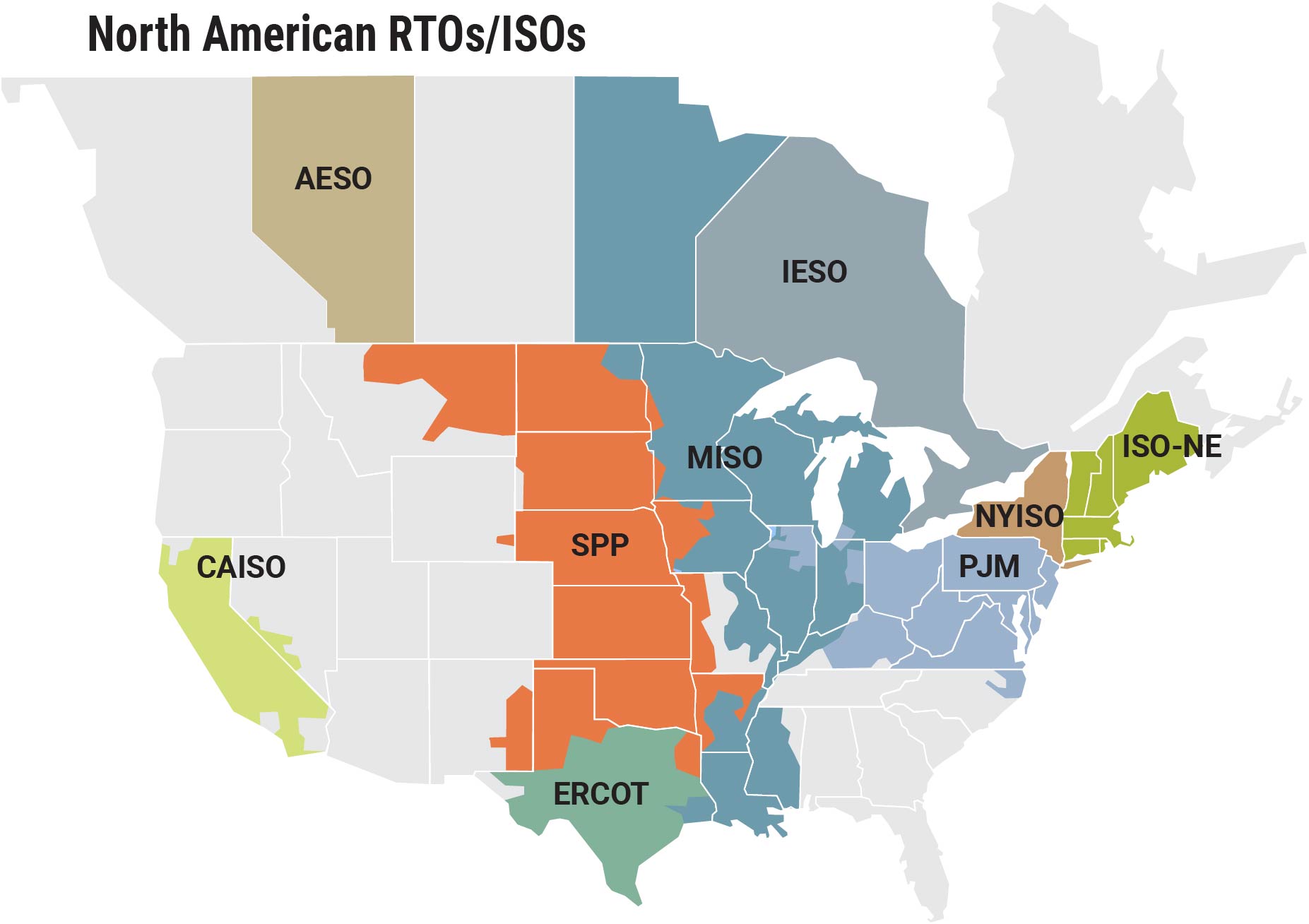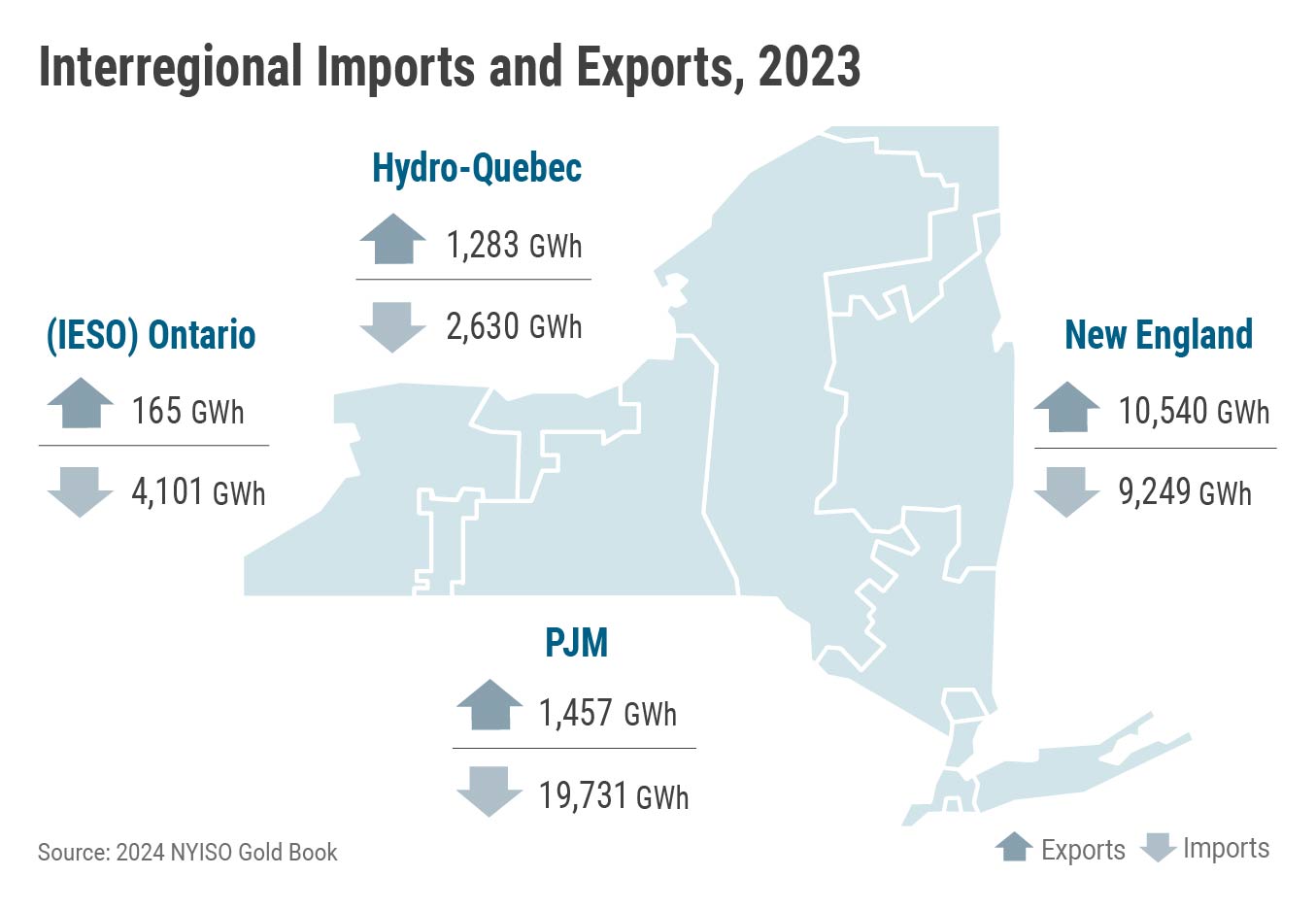How Electricity Imports from Canada, Neighboring States Support Grid Reliability

In 1896, 20 years after the world’s first power grid began illuminating the streets of Manhattan, the first long-distance transmission lines were built to deliver electricity from Niagara Falls to Buffalo. The innovation signaled a new era in which power could be carried over long-distance transmission lines to meet the needs of distant energy users.
Today, New York is at the center of an electrical hub, with transmission pathways connecting our electric system to power grids in New England, Quebec, Ontario, and the Mid-Atlantic region. It’s part of an international network of nine independent but  interconnected electric grids overseen by grid operators, which also manage wholesale energy markets and transmission planning. In recent years, NYISO has strengthened those ties through its Broader Regional Markets initiative and its Public Policy Transmission Need (PPTN) process, through which the organization seeks solutions to ease congestion on the state’s transmission lines.
interconnected electric grids overseen by grid operators, which also manage wholesale energy markets and transmission planning. In recent years, NYISO has strengthened those ties through its Broader Regional Markets initiative and its Public Policy Transmission Need (PPTN) process, through which the organization seeks solutions to ease congestion on the state’s transmission lines.
These connections across state and national boundaries provide valuable flexibility and resiliency to the power grid. “The electric system in the U.S. is one of the largest machines ever built,” said Emilie Nelson, NYISO Executive Vice President and Chief Operating Officer. “It enables us to rely on our neighbors and the power systems that are adjacent to us when our grid is stressed. The ability to work collaboratively across the industry is crucial to our success.”
One big machine
The U.S. electric system has a long tradition of coordinating operations to enhance reliability across regional boundaries and facilitate mutual aid among utilities recovering from disasters.
New York primarily trades electricity with adjacent grids. However, megawatts that power New York homes and businesses may travel further distances when bought and sold to New York through a neighboring control area. New York also “wheels” electricity, allowing megawatts to pass through its grid en-route from one neighboring region to another. The bulk of electricity wheeled through New York is from transactions between Canada and New England.
Economics also have a role in where electricity comes from. NYISO’s wholesale energy markets involve a competitive bidding process designed ensure that there is sufficient flow of electricity at the lowest possible cost to consumers, according to Aaron Markham, NYISO Vice President of Operations.
“The level of imports we get from the neighbors depends on a number of factors. What is our supply mix and cost? What is their supply mix and cost?” Markham said. “When our prices are higher, we tend to import from them and during lower-priced periods,  we export quite a lot.”
we export quite a lot.”
Historically, New York and Canadian provinces have relied on each other to supplement their power generation, because demand tends to peak in the winter in Quebec, while the New York electric grid sees the highest electricity use in the summertime. That dynamic flipped this past summer when Canada’s drier-than-usual season hindered its hydroelectricity production. The relationship will continue to evolve as New York’s electric system shifts to a winter-peaking system over the next decade. The resilience of the energy exchange network was tested during recent extreme weather events, including Winter Storm Elliot, which crippled generation in much of the Northeast in December 2022.
During the winter storm, New York’s dual-fuel power plants, which can switch to oil generation when gas is scarce, helped stabilize New York’s grid and while also providing neighbors with emergency megawatts. The NYISO’s day-ahead planning process had initially anticipated that New York would import a large amount of electricity from PJM, which oversees the power grid across 13 states, from parts of Illinois and Michigan to Pennsylvania and as far south as North Carolina. But on Dec. 24, 2022, PJM experienced a cascade of generation challenges due to constraints on the gas system, high demand and unplanned outages.
“We were able to turn the flow around with the help of some additional imports from ISO-NE, Ontario, Quebec, as well as our own resources, in order to flow more energy to PJM,” Markham said.
Our interregional ties will also be critical to supporting power demands from microchip manufacturing, data centers, and other large loads that are currently in development across New York. These new facilities are expected to add more than 2,000 MW of peak demand over the next decade.
The NYISO and its partners continue to work closely to eliminate barriers to power flows across regions. Over the course of several years, regional power grid operators sought to better coordinate market rules to expand access to resources and provide more economical electricity to consumers.
New York and its neighbors have also made significant investments in transmission infrastructure. New York’s 20-mile Empire State Line, a 345-kilovolt transmission channel serving Western New York, has facilitated greater utilization of electricity imports from Ontario. Another large-scale transmission project currently in development, the Champlain Hudson Power Express (CHPE), will be able to deliver 1,250 megawatts (MW) renewable hydroelectric energy to New York City from dams in Quebec.
With supply and demand on the grid expected to grow increasingly dynamic, having the flexibility to easily move power from one region to another helps to balance the variable output of renewable resources, integrate distributed energy resources, and bolster system resilience during extreme weather events.
“Having the geographic diversity and flexibility is always good from a reliability perspective,” Markham said. “The more capability you have to exchange electricity with the neighbors, the more reliable and resilient you are.”
A Snapshot of New York's Electricity Imports and Exports
- New York’s transactions with neighboring control areas can be tracked on the NYISO’s Real-Time Markets Dashboard and annual import-export figures are listed in the Gold Book.
- In 2023, New York relied on roughly 35,711 GWh of energy imports to meet its needs. New York exported roughly 13,445 GWh that same year, mostly to New England. New York’s grid also serves as a valuable link between neighbors.

